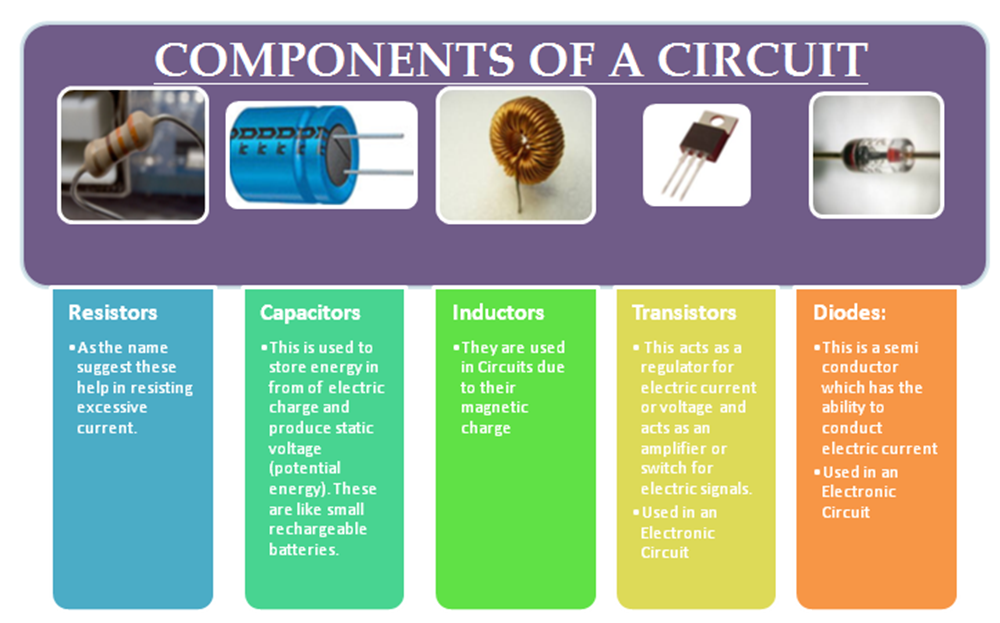What Are The Key Components Of Electrical Circuits?
When it comes to the world of electronics, circuits are one of the most fundamental and important topics to master. If you are new to electronics, circuits can seem a bit overwhelming at first glance. But, with a little bit of effort and practice, anyone can learn the basics of circuits. In this post, we will dive deep into the components of a circuit, as well as some of the key concepts related to circuits. To start, let's talk about what a circuit actually is. It is essentially a path that allows electricity to flow through it. The path typically consists of several components, including a source of electricity, wires to connect the components, and loads or devices to use the electricity. The components that make up a circuit can vary greatly, but there are a few basic types that are found in most circuits. One of the most important components of a circuit is a resistor. Resistors are used to restrict the flow of electricity through a circuit. They do this by simply resisting the flow of electricity, hence the name. A common use case for resistors is to control the amount of current that flows through a circuit to prevent damage to other components. Another important component of a circuit is a capacitor. Capacitors are used to store electrical charge. They can be thought of as small, rechargeable batteries that can be charged up and then gradually release their charge over time. Capacitors can be used in a variety of ways, such as to smooth out the voltage in a circuit or to filter out unwanted noise. In addition to resistors and capacitors, there are also a few other key components that are commonly used in circuits. One of these is the diode. A diode is a component that allows current to flow in one direction only. They are often used to protect other components from damage caused by reversed current flow. Another important type of circuit component is the transistor. Transistors are used to amplify or switch electronic signals. They can be used in a variety of ways, such as to amplify the sound signals in an audio amplifier or to switch on and off the power to a light bulb. Now that we know some of the basic components of a circuit, let's talk about how these components are connected together. The most basic type of circuit is a series circuit. In a series circuit, the components are connected end-to-end, so that the current flows through each component in turn. If one component in a series circuit fails or is removed, the entire circuit will be broken and no current will flow. Another type of circuit is the parallel circuit. In a parallel circuit, the components are connected in parallel to each other, with each component having its own branch of the circuit. In a parallel circuit, if one component fails, the other components will continue to function normally. In addition to series and parallel circuits, there are also a few other more complex types of circuits. One of these is the complex circuit, which is made up of a combination of series and parallel circuits. These types of circuits can be quite complex, but they can also be very useful for specific applications. So, now that we know the basics of circuits and circuit components, what can we actually do with circuits? The answer is, a lot! Circuits can be used for a wide variety of applications, from powering simple light bulbs to controlling complex machines and systems. One of the most common uses for circuits is to power electronic devices, such as radios, televisions, and computers. These devices typically require a complex series of circuits to function properly, but they all rely on the same basic principles of circuitry. Another common use for circuits is in the field of automation. Circuits can be used to control the operation of machines and systems, such as factory robots or HVAC systems. In these applications, circuits can be used to monitor sensors and make decisions based on the data they collect. Circuits can also be used in the field of renewable energy. Solar panels and wind turbines rely on circuits to convert the energy they generate into usable electricity. These types of circuits can be quite complex, but they are essential to our transition to more sustainable forms of energy. Finally, circuits are also used in the field of telecommunications. Everything from cell phones to satellite systems relies on complex circuits to transmit and receive information. In conclusion, circuits are an essential component of the world of electronics. Whether you are a hobbyist or a professional, understanding circuits and their components is key to mastering the field. They are used in a variety of applications, from powering simple devices to controlling complex systems, and they will continue to be a vital part of our technological future. 

www.electricaleasy.com - components circuit circuits introduction series many brief two voltage arranged ways
Post a Comment for "What Are The Key Components Of Electrical Circuits?"